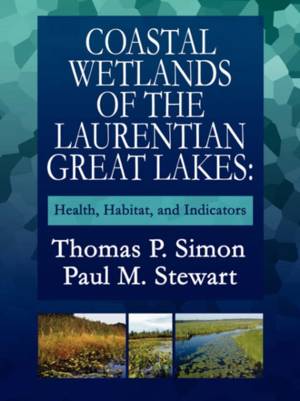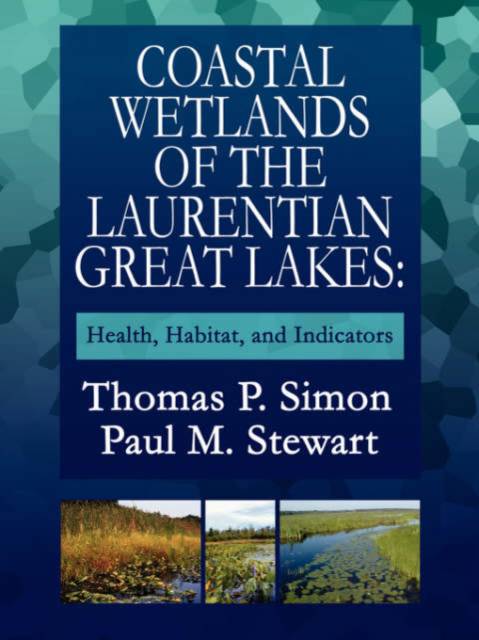
- Afhalen na 1 uur in een winkel met voorraad
- Gratis thuislevering in België vanaf € 30
- Ruim aanbod met 7 miljoen producten
- Afhalen na 1 uur in een winkel met voorraad
- Gratis thuislevering in België vanaf € 30
- Ruim aanbod met 7 miljoen producten
Zoeken
Coastal Wetlands of the Laurentian Great Lakes
: Health, Habitat, and Indicators
Thomas P Simon, Paul M Stewart
Paperback | Engels
€ 104,95
+ 209 punten
Omschrijving
Coastal Wetlands of the Laurentian Great Lakes: Health, Habitat, and Indicators is the first book to comprehensively evaluate the status of drowned river mouth and open lake wetlands in the Laurentian Great Lakes. This research brings together leading experts from the United States and Canada to present innovative techniques and applications to monitor and assess this important resource. As coastal wetlands disappear, this research provides important benchmarks for understanding the structure and function of these communities. The text describes the classification of aquatic plants, aquatic macroinvertebrates, and fish assemblages for biological indicator development and provides indices of biotic integrity by leading experts in the field for each Great Lake and connecting channel. The contributors are among the top researchers and environmental biologists in North America and provide their own perspectives on current aspects of biological criteria implementation. From it factors affecting coastal wetlands to case studies, Coastal Wetlands of the Laurentian Great Lakes will help readers better understand the quality and impacts of environmental stressors on biological communities, and thus protect and restore water resources of the Great Lakes. FEATURES: 1) Uses a variety of environmental indicators including water quality, habitat, aquatic macrophytes, macroinvertebrates, crayfish, and fish. 2) Provides classification and original compilations of literature on biological indicators and case studies. 3) Presents perspectives on coastal wetland classification and indicator tools that will further the field of wetland science. 4) Includes new state-of-the-art diagnostic tools that can be used to evaluate the magnitude and extent of impacts.
Specificaties
Betrokkenen
- Auteur(s):
- Uitgeverij:
Inhoud
- Aantal bladzijden:
- 540
- Taal:
- Engels
Eigenschappen
- Productcode (EAN):
- 9781425928483
- Verschijningsdatum:
- 11/01/2007
- Uitvoering:
- Paperback
- Formaat:
- Trade paperback (VS)
- Afmetingen:
- 210 mm x 279 mm
- Gewicht:
- 1197 g

Alleen bij Standaard Boekhandel
+ 209 punten op je klantenkaart van Standaard Boekhandel
Beoordelingen
We publiceren alleen reviews die voldoen aan de voorwaarden voor reviews. Bekijk onze voorwaarden voor reviews.











